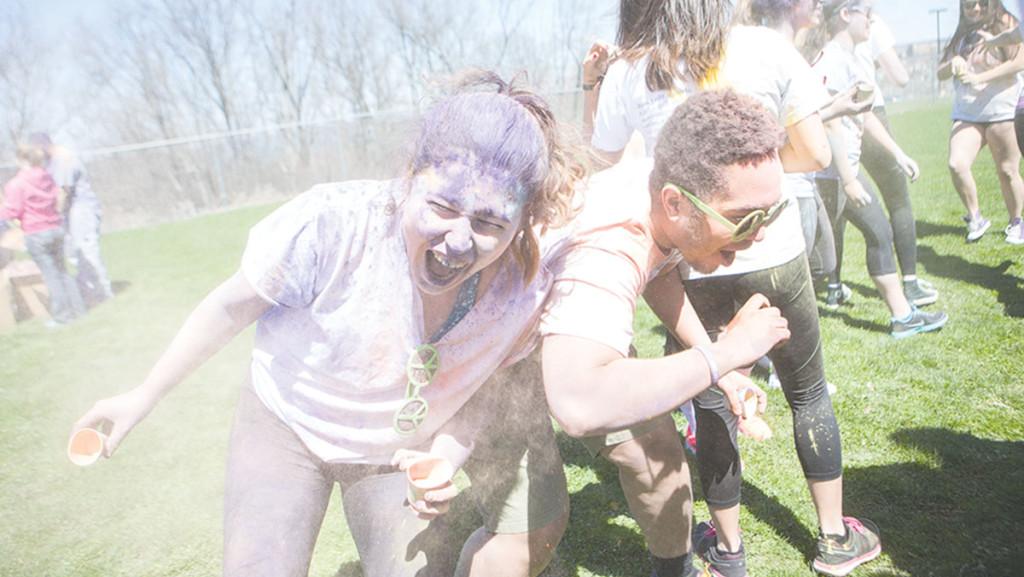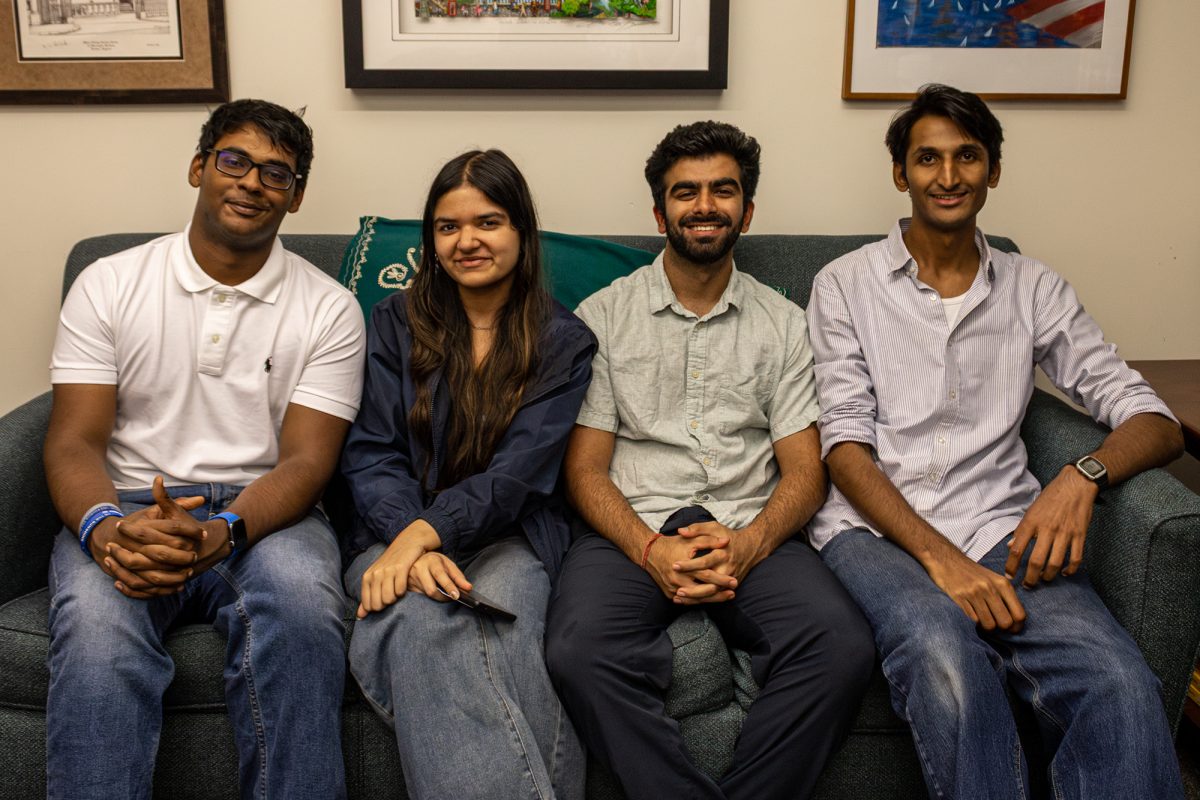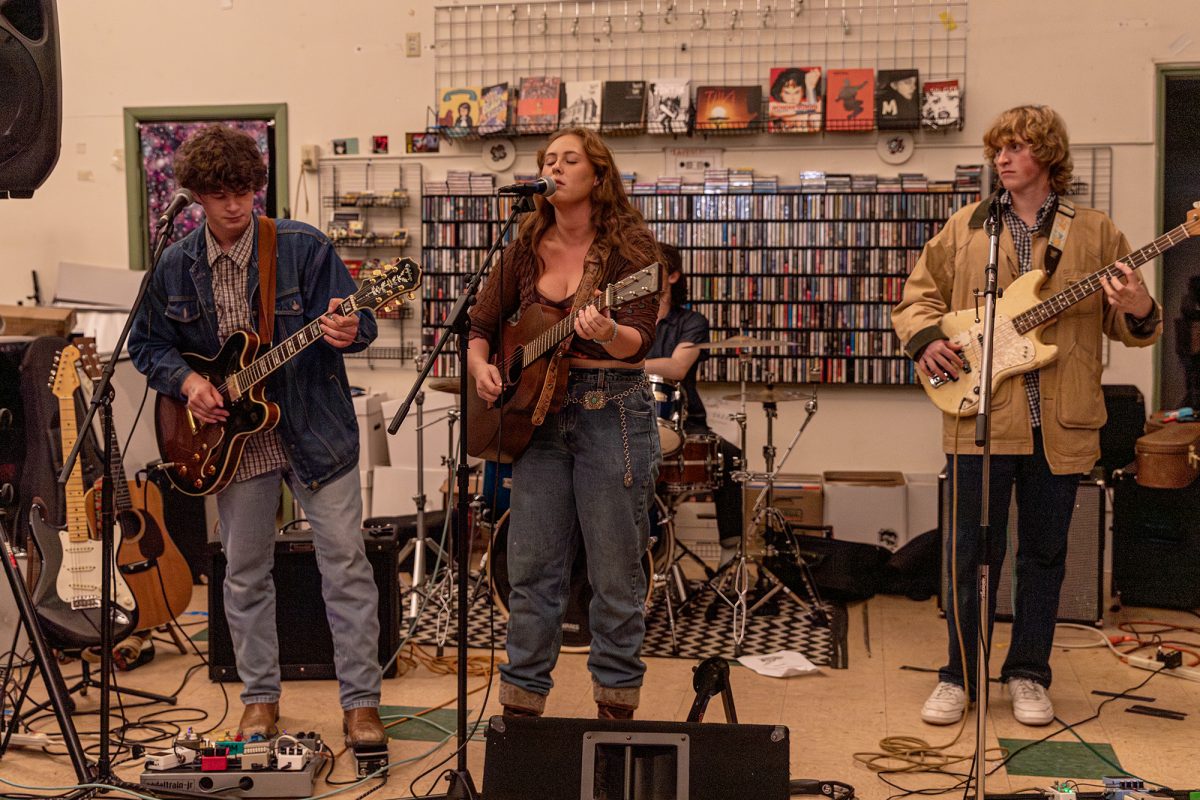On a bright Saturday in April, red, yellow and purple splashed against the background of a clear, blue sky, highlighting a steady hum of music and laughter. The source of the bright display was a seemingly endless supply of colored powder, which a crowd of Ithaca College students tossed into the air and at one another, cheering as the colors carried on the wind. In the field behind Emerson Hall, hundreds of people came together to celebrate the traditionally Indian and Hindu festival of colors known as Holi.
According to the official website representing worldwide Holi festivals, the holiday originated as a Hindu rite performed by women to bring happiness and health to their families by worshipping the full moon. The ritual eventually developed to be a festival representing unity, love and the coming of spring. It spread through Southeast Asia and eventually across the globe as Indian people emigrated and settled in different nations.
The South Asian Students Society at the college, with some assistance from IC International Club, sponsored the college’s first Holi festival April 25 in the field behind Emerson Hall. Senior Dhruv Padmakumar, current public relations chair of IC International Club, said it was exciting to have the opportunity to bring this festival to the college.
“[Holi is] the festival of colors, and it’s like a spring event, so changing of the colors, spring coming into session,” Padmakumar said. “It’s a huge part of Southeast Asian tradition, Hindu tradition, and it’s just nice to be able to share it with Ithaca College.”
Sophomore Serena Ansari, who serves as the social media chair of the South Asian Students Society, said this was one of the first events that SASS held independently of IC International Club, and the groups plan to make the Holi festival an annual event at the college.
“ICIC is basically like a parent club for SASS,” Ansari said. “They have helped us out a lot in the beginning by collaborating with us on events. However, Holi is something we pulled off by ourselves, so this was a trial and error for us. In the future we hope to hold a bigger event, which will have more cultural activities such as dance performances, food and henna. We also hope that we can hold a much larger event in terms of the amount of people that attend and the venue that we have.”
The traditional activities associated with Holi, particularly throwing colored powder, have also become popular in other areas of Western culture. Events known as color runs put a spin on 5K races by using colored powder in a similar fashion to Holi festivals. The original Color Run is a 5K run series of “paint races” that was founded in 2011. The group’s website states, “Less about your 10-minute-mile and more about having the time of your life, The Color Run is a five-kilometer, un-timed race in which thousands of participants, or ‘Color Runners’, are doused from head to toe in different colors at each kilometer.”
On April 26, 4-H Youth Development, part of the Cornell Cooperative Extension of Tompkins County, held a Color Splash Run 3K and 5K in Stewart Park in Ithaca. The race, coincidentally, took place fewer than 24 hours after the Holi festival at the college. The stark similarity of color runs to the traditional Holi festival raises questions about whether the recreational race has appropriated Hindu culture.
Freshman Marisa Pittarelli, who has participated in multiple color runs, including the Color Splash Run on April 26, said the event isn’t doing harm and is simply about having fun and being healthy.
“Some color runs are about raising money for different causes and are kind of like, ‘Hey this is a fun activity that happens to be raising money,’” Pittarelli said. “Other brands of the color run are more about just the fitness aspect of it, and they don’t care too much about how it started. I think if the company wants to advertise this as just being a fun activity, then that’s their right to do that.”
Though the concept of color runs may have been taken from the tradition of Holi, both events are simply based on celebrating color and having a good time.
“I feel like it might have originated from Holi, but I think they’re just trying to have a good time, and that’s perfectly fine,” Padmakumar said. “I think that the cultural aspects behind Holi are sacred to the countries that celebrate them, but I don’t think that people should be held accountable for throwing some colors and having some fun.”














